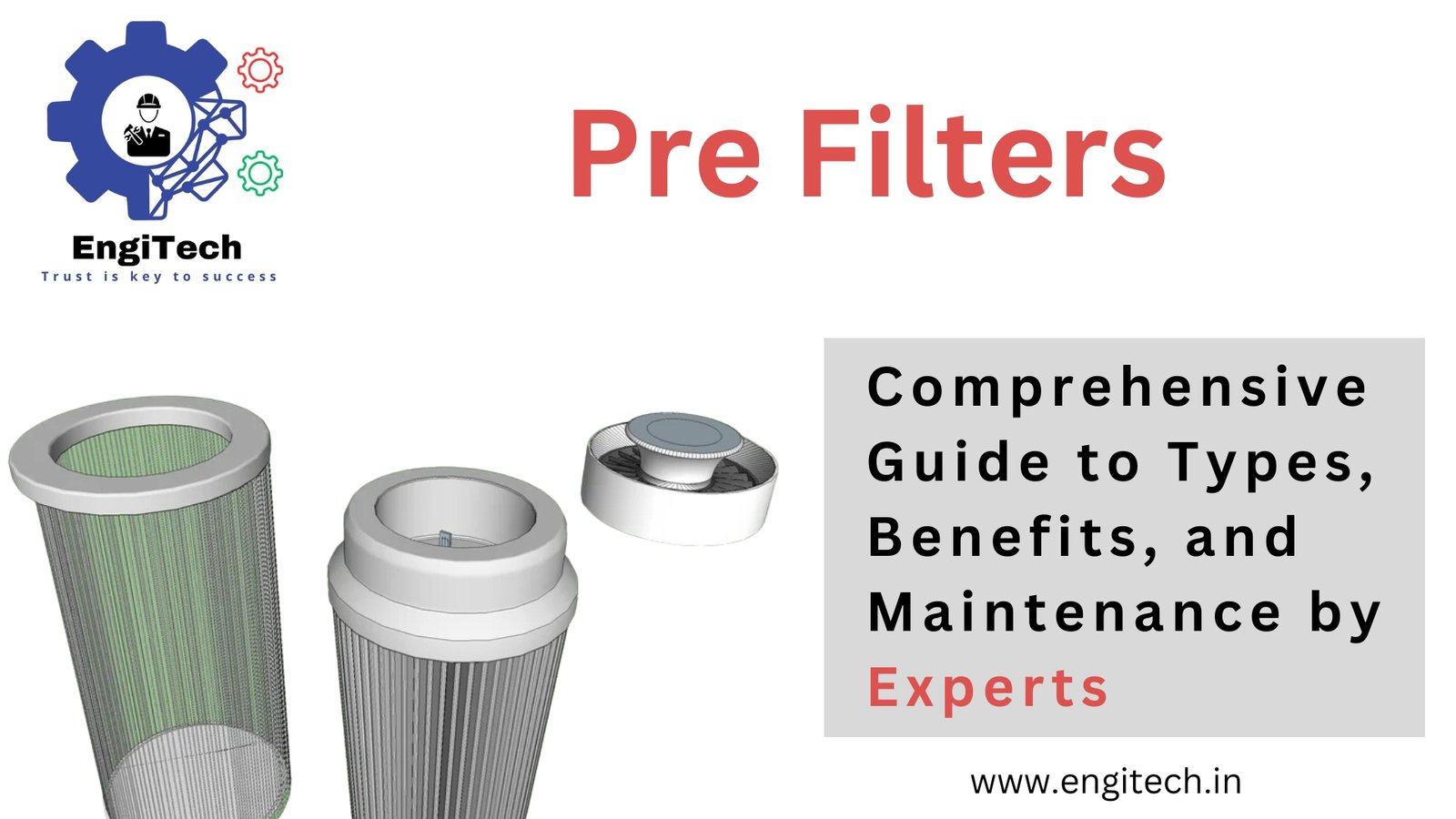Activated Carbon Filters: The Ultimate Guide to How They Work and Why You Need Them

Activated carbon filters are one of the most effective filtration methods widely used in various industries, from air purification to water treatment. Their versatility, efficiency, and environmental benefits make them indispensable in modern mechanical and industrial applications. In this comprehensive guide, we will explore everything you need to know about activated carbon filters, from their working principles to their key applications and benefits.
Table of Contents
What Are Activated Carbon Filters?
Activated carbon filters are specialized filters used to remove contaminants, pollutants, and impurities from air, water, and gases through adsorption. These filters are composed of activated carbon, which is a form of carbon processed to have small, low-volume pores that increase the surface area available for adsorption.
Activated carbon filters are known for their efficiency in trapping organic compounds, chlorine, and volatile organic compounds (VOCs), making them crucial in improving air and water quality.
How Activated Carbon Filters Work
Activated carbon filters function primarily through the process of adsorption. This is different from absorption, where materials are absorbed into a substance. Adsorption refers to the adhesion of molecules from a gas, liquid, or dissolved solid to the surface of the carbon material. Due to the high surface area of activated carbon, contaminants bind to its surface, removing them from the air or water.
Here’s a simple breakdown of the process:
- Contaminant Contact: As air or water passes through the filter, contaminants come into contact with the activated carbon surface.
- Adsorption: Pollutants, especially organic molecules, adhere to the surface of the carbon particles. Due to its porous structure, activated carbon provides a vast surface area for these molecules to attach to.
- Clean Output: The filtered air or water is released, significantly free from the targeted contaminants.
Types of Activated Carbon Filters
There are several types of activated carbon filters, each designed for specific applications and contaminants:
1. Granular Activated Carbon (GAC) Filters
GAC filters use loose granules of activated carbon, which are highly effective at adsorbing chlorine, VOCs, and certain heavy metals. These filters are commonly used in water filtration systems and air purifiers.
2. Powdered Activated Carbon (PAC) Filters
PAC filters consist of finely ground carbon particles that offer an even larger surface area for adsorption. Due to their fine nature, PAC filters are typically used in municipal water treatment facilities.
3. Extruded Activated Carbon Filters
These filters are formed by combining activated carbon with a binder, then extruding it into a solid block. This structure increases the contact time between contaminants and the filter, enhancing its efficiency.
4. Catalytic Activated Carbon Filters
Catalytic activated carbon filters are specifically designed to remove chlorine and chloramines from water. These filters have modified carbon that enhances chemical reactions, making them effective for treating industrial water.
Applications of Activated Carbon Filters
Activated carbon filters find their applications across various industries due to their versatility and high efficiency:
1. Water Purification
One of the most common uses of activated carbon filters is in water purification. They are effective at removing contaminants like chlorine, pesticides, herbicides, and harmful chemicals, ensuring clean drinking water.
2. Air Filtration
In air purification systems, activated carbon filters help to remove odors, smoke, and harmful gases such as VOCs. These filters are often used in homes, offices, and industrial settings to improve indoor air quality.
3. Industrial Gas Processing
Activated carbon filters are critical in processing industrial gases to remove harmful pollutants before they are released into the atmosphere, ensuring compliance with environmental regulations.
4. Food and Beverage Industry
In the food and beverage industry, activated carbon filters are used to remove unwanted flavors, odors, and colors from products like sugar, wine, and beer.
5. Medical Applications
In medical settings, activated carbon filters are used to purify the air in surgical theaters and intensive care units, ensuring a sterile environment.
Key Benefits of Using Activated Carbon Filters
Activated carbon filters offer several benefits that make them an essential component in both residential and industrial applications:
1. Effective Removal of Contaminants
Activated carbon filters can effectively remove a wide range of impurities, including chlorine, VOCs, heavy metals, and even some bacteria and viruses, depending on the filter type.
2. Improved Taste and Odor
In water filtration, activated carbon filters significantly improve the taste and odor of water by removing chlorine and other chemical contaminants.
3. Eco-Friendly
These filters are a green option as they do not require the use of harmful chemicals to clean air or water, reducing environmental impact.
4. Versatile Applications
From air and water purification to industrial uses, activated carbon filters are highly versatile and can be tailored for specific applications.
5. Cost-Effective
Activated carbon filters are affordable compared to other filtration technologies, providing an economical solution for air and water purification needs.
How to Choose the Right Activated Carbon Filter
Choosing the right activated carbon filter depends on several factors, including:
- Type of Contaminants: Identify the primary contaminants you wish to remove. For example, GAC filters are ideal for chlorine, while catalytic carbon is better for chloramines.
- Flow Rate: Consider the flow rate of water or air through the filter. Higher flow rates require filters with larger surface areas.
- Usage Environment: Industrial applications may require more robust and durable filters compared to home water or air purification systems.
Maintenance and Lifespan of Activated Carbon Filters
The lifespan of an activated carbon filter depends on the contaminant load and the type of filter. Typically, activated carbon filters should be replaced every 3 to 6 months for optimal performance. Some key maintenance tips include:
- Regular Replacement: Ensure timely replacement of filters to prevent clogging and reduced efficiency.
- Monitor Flow Rates: Decreased flow rates could indicate that the filter is saturated and needs replacement.
- Use Pre-Filters: In water systems, using a sediment pre-filter can extend the life of the activated carbon filter by preventing large particles from clogging the pores.
Environmental Impact of Activated Carbon Filters
Activated carbon filters are considered environmentally friendly due to their ability to reduce the need for chemical treatment in water and air purification processes. Furthermore, many activated carbon filters can be regenerated or recycled, reducing waste.
However, proper disposal of saturated filters is necessary to avoid releasing adsorbed pollutants back into the environment. Many industrial applications involve the regeneration of activated carbon, further enhancing its sustainability.
Most frequently asked questions (FAQs) about activated carbon filters:
1. What is an activated carbon filter?
An activated carbon filter is a filtration device that uses activated carbon to remove impurities, contaminants, and pollutants from air, water, or gases. Activated carbon is highly porous and has a large surface area, allowing it to trap and adsorb organic compounds, chlorine, and volatile organic compounds (VOCs).
2. How do activated carbon filters work?
Activated carbon filters work by adsorption, where contaminants are attracted to and held on the surface of the carbon particles. As air or water passes through the filter, pollutants bind to the carbon’s surface, purifying the output.
3. What contaminants do activated carbon filters remove?
Activated carbon filters are effective in removing a wide range of contaminants, including chlorine, VOCs, pesticides, herbicides, lead, mercury, and unpleasant odors. Some filters can also remove bacteria and viruses depending on the filter’s design.
4. What are the types of activated carbon filters?
There are several types of activated carbon filters, including Granular Activated Carbon (GAC), Powdered Activated Carbon (PAC), Extruded Activated Carbon, and Catalytic Activated Carbon. Each type is designed for specific applications and contaminants.
5. How often should I replace my activated carbon filter?
Activated carbon filters generally last between 3 to 6 months, depending on the contaminant load and the environment in which they are used. It’s important to monitor the filter for signs of saturation, such as reduced flow rate or a noticeable decline in performance.
6. Can activated carbon filters remove heavy metals?
Activated carbon filters can remove certain heavy metals, such as lead and mercury, particularly when designed for water filtration. However, they are less effective at removing other heavy metals like arsenic, which may require specialized filtration methods.
7. Do activated carbon filters remove viruses and bacteria?
Standard activated carbon filters are not designed to remove viruses and bacteria effectively. However, some advanced filters combine activated carbon with other technologies, such as UV light or membrane filtration, to enhance their ability to remove microbial contaminants.
8. Are activated carbon filters environmentally friendly?
Yes, activated carbon filters are considered eco-friendly because they don’t require chemicals to operate and can be regenerated in some cases. However, proper disposal or recycling of spent carbon is important to minimize environmental impact.
9. Can activated carbon filters be reused or regenerated?
Some types of activated carbon can be regenerated through heating or other processes to restore their adsorptive capacity. However, this is usually done in industrial settings. For most consumer filters, it’s recommended to replace them regularly for optimal performance.
10. What is the difference between activated carbon and charcoal?
While both activated carbon and charcoal are forms of carbon, activated carbon is processed to have a much larger surface area and greater adsorptive capacity. Charcoal is less porous and therefore less effective for filtration purposes compared to activated carbon.
Conclusion: Why Activated Carbon Filters Are a Must-Have
Activated carbon filters are an essential solution for industries, businesses, and households aiming to improve the quality of air and water. Their ability to effectively remove a wide range of contaminants, improve taste and odor, and offer eco-friendly and cost-effective solutions makes them indispensable in today’s world.
Whether you’re looking to purify drinking water, improve air quality, or comply with environmental regulations in industrial processes, activated carbon filters provide the optimal solution. Make the right choice for your needs by selecting the appropriate type of activated carbon filter, and enjoy cleaner, safer air and water.
For more expert insights into filtration technologies and industrial solutions, visit EngiTech and stay updated with the latest innovations in mechanical engineering.


